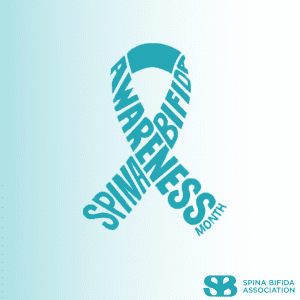Spina Bifida
What is spina bifida?
Spina bifida, which literally means “cleft spine,” occurs when the neural tube, a layer of cells that develops into the brain and spinal cord, does not close completely during the first month of embryonic development. Because of this, the bones of the spinal column (vertebrae) do not close completely around the developing nerves of the spinal cord, leaving a portion of it exposed. Part of the spinal cord may protrude through an opening in the spine, which leads to nerve damage. While the spinal opening can be surgically repaired after birth, the nerve damage is permanent, resulting in varying degrees of paralysis in the lower limbs. Spina bifida is usually present at birth, though it can occasionally develop during adolescence. About 1 in 2,500 babies are affected worldwide. There are various forms of spina bifida, detailed below.What are the symptoms of spina bifida?
Symptoms vary widely depending on the extent of the defect in the spine. They can include:- Fluid-filled sac on their back that protrudes from the spinal canal
- If it is covered by skin, it is called a meningocele.
- If the sac contains parts of the spinal cord and its protective covering, and has no layer of skin covering it, it is called a myelomeningocele.
- Difficulty controlling bladder
- Presence of a dimple or tuft of hair on the back over the affected area
- Paralysis in lower limbs
- Difficulty walking
- Intellectual disability
- Hydrocephalus (in which there is too much cerebrospinal fluid in the brain)
- Seizures
What are the types of spina bifida?
- Spina Bifida Occulta: The mildest and most common form, in which vertebrae are malformed, but the spinal cord’s nerves still develop normally. The nerves do not stick out through an opening in the spine; instead, they are covered by a layer of skin. The lack of closure of the neural tube only affects a small area of the spine. It usually does not cause health problems; when it does, they are usually back pain or impeded bladder function.
- Closed neural tube defects: A group of defects in which development of the spinal cord is affected by malformations of the fat, bone, or meninges. There are usually few or no symptoms. Symptoms that do appear usually involve incomplete paralysis and bowel dysfunction.
- Meningocele: The spinal cord develops normally but the meninges (protective covering on the spinal cord) and spinal fluid protrude from an opening in the spine. The sac that protrudes has no neural elements. Symptoms experienced include complete paralysis and bowel dysfunction.
- Myelomeninocele: This is the most severe form of spina bifida. The spinal cord and the meninges protrude from an opening in the spine, which results in partial or complete paralysis below the spinal opening. The individual may be unable to walk and/or have bowel disfunction.
What causes spina bifida?
The exact cause is not known. Researchers believe that a combination of hereditary and environmental factors may be involved. Studies indicate that if a mother’s diet has an insufficient amount of folic acid, a common B vitamin, that may have a hand in causing spina bifida and other neural tube defects.How is spina bifida diagnosed?
Spina bifida is diagnosed using the following procedures:- Prenatal testing:
- MSAFP screening
- Blood tests
- Fetal ultrasound
- Amniocentesis (the doctor removes samples of fluid from the amniotic sac surrounding the fetus)
- Postnatal diagnosis:
- Clinical evaluation
- X-ray
- MRI
- CT scan
What are treatments for spina bifida?
There is no cure for spina bifida, and damaged nerve tissue cannot be replaced or repaired. Treatment depends on the type and severity of the disorder. Children with the mildest form may not require treatment. Treatment includes, but is not limited to:- Early surgery to prevent infection from developing in the exposed nerves and tissue
- Subsequent surgeries to manage problems in lower limbs may be needed
- Medication
- Immediate surgery is needed if the sac breaks
- Corrective shoes, braces, crutches, or other devices
- Range of motion exercises
- Bladder catheterizations and bowel management regimens
- A preventative technique is for mothers to take prenatal vitamins that contain folic acid while pregnant
Where can I find out more about spina bifida?
Spina Bifida Articles



Basketball Manager with Spina Bifida Helps Take Team to the Next Level
Jessica Lynn
April 25, 2023
Read More »


A Mom is Undergoing In-Utero Surgery to Fix Her Baby’s Spina Bifida
Jessica Lynn
May 25, 2022
Read More »

Compassion Corner: A Doctor’s Compassion Saved Her Son’s Life
Rose Duesterwald
March 31, 2022
Read More »

UTHealth Houston Physicians Are United In Treating 5-year-old With Spina Bifida
Alyssa Stevens
October 19, 2021
Read More »







